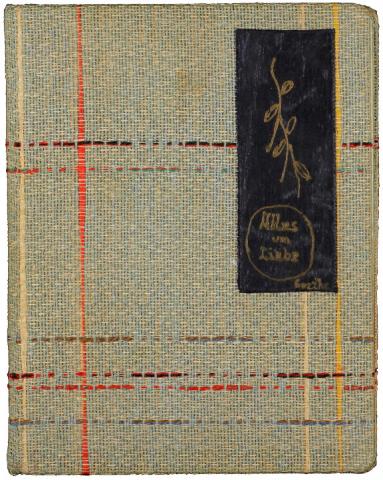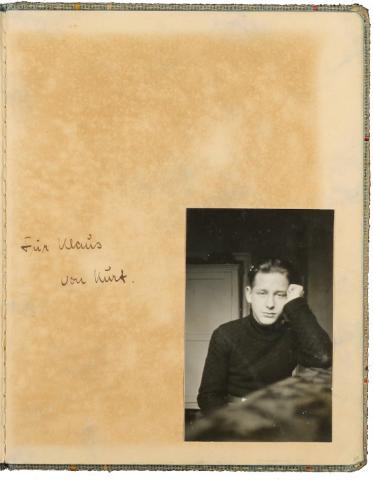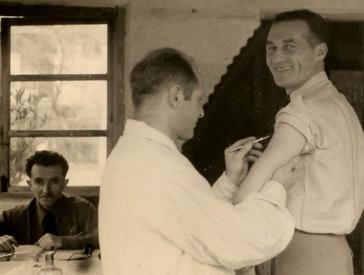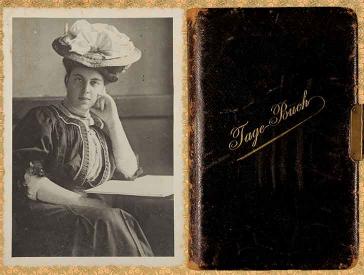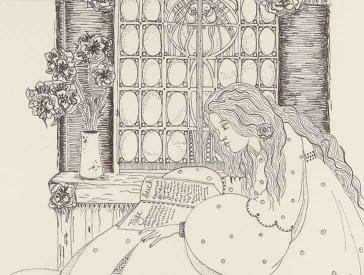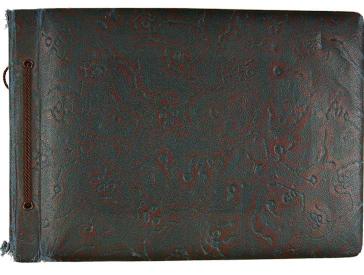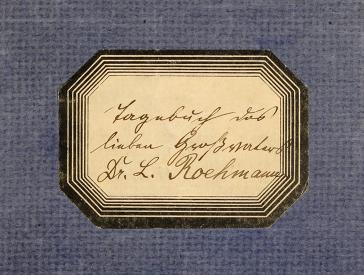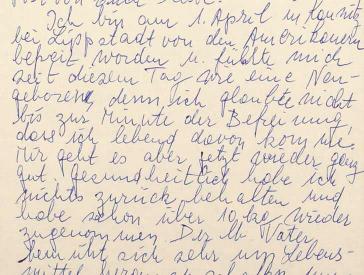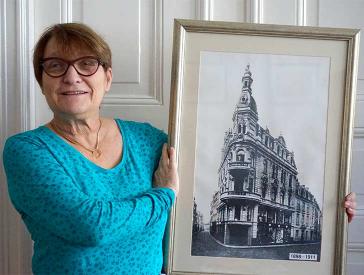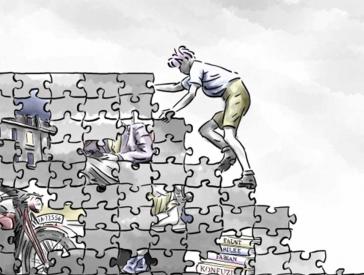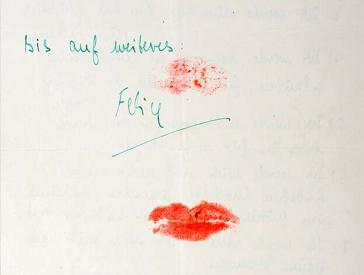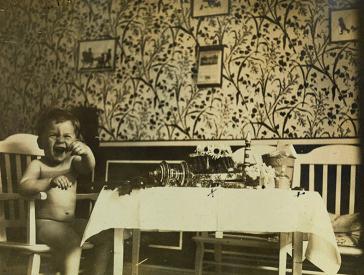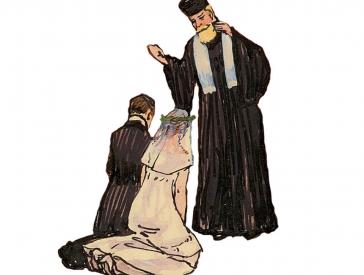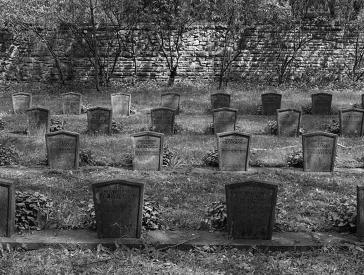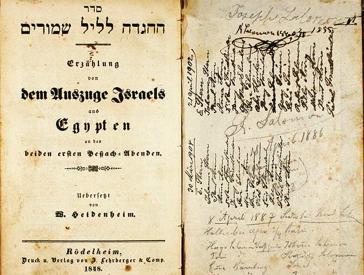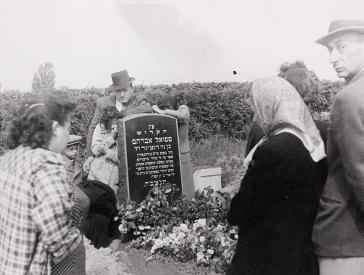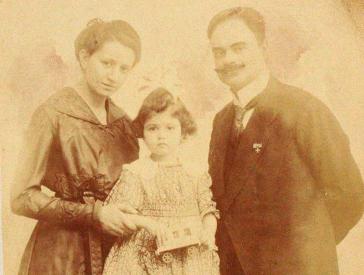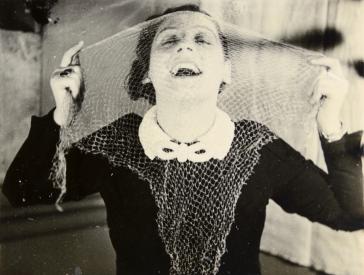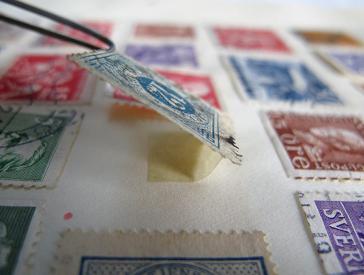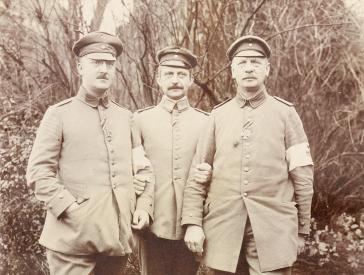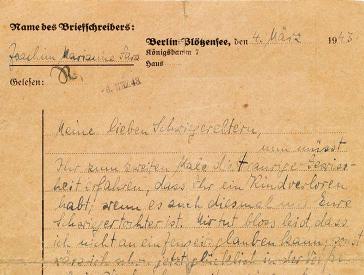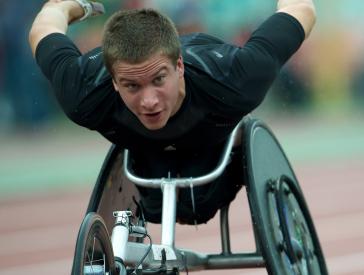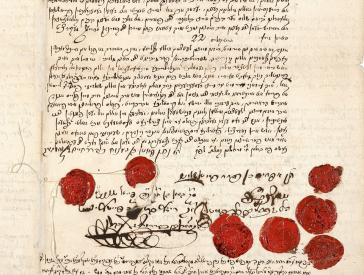
All for Love
Sexual Diversity in the Collection of the Jewish Museum Berlin
The collection of the Jewish Museum Berlin includes items related to people who would possibly identify as LGBTIQ* today, but unfortunately they aren’t very visible. “Homosexuality” is a keyword in the museum database, but it is hardly used.
Felice Schragenheim and Elisabeth Wust
Most of the items associated with this keyword come from the collection on Felice Schragenheim (1922–1945) and Elisabeth (Lilly) Wust (1913–2006). Erica Fischer’s 1994 book Aimée & Jaguar made their story known, and the 1999 film of the same name made it famous.
Photos and documents record their romantic relationship, including numerous love letters, some of them sealed with Felice’s kiss.
The two “marriage contracts” that the women signed with each other in 1943 are highly unusual. The 21-year-old Felice composed hers in the form of a decalogue with ten promises:
“1) I will always love you.
2) I will never leave you alone.
3) I will do everything I can to make you happy.
4) I will provide for you and the children as much as conditions allow.
5) I won’t object to you providing for me.
6) I won’t look at pretty girls anymore, at most to confirm that you’re prettier.
7) I won’t come home late very often.
8) I will try to grind my teeth quietly at night.
9) I will always love you.
10) I will always love you.
Until further notice.
Felice”
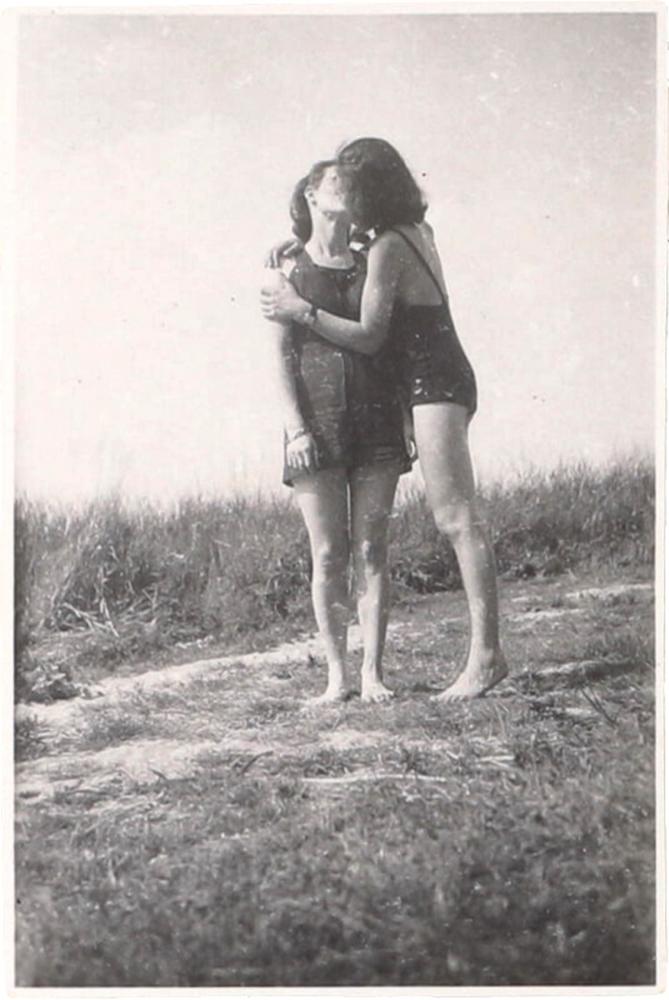
Felice Schragenheim and Elisabeth Wust on an excursion to the Havel River, just hours before Schragenheim’s arrest, Berlin, 21 August 1944; Jewish Museum Berlin, gift from Elisabeth Wust
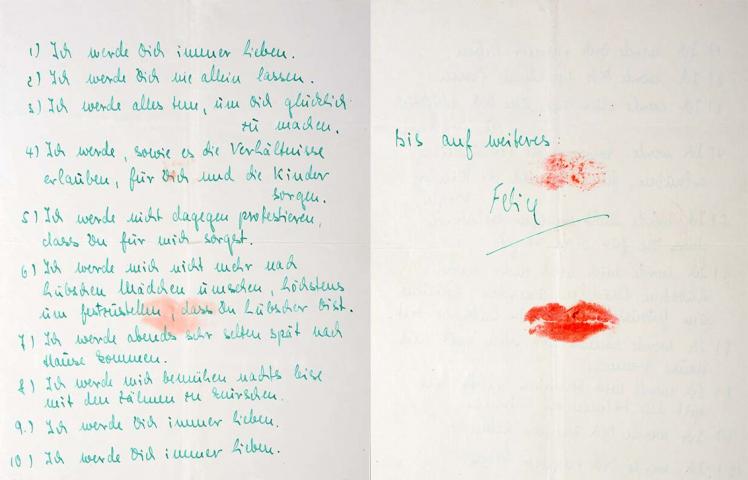
Marriage contract between Felice Schragenheim and Elisabeth Wust, Berlin, June 1943; Jewish Museum Berlin, gift from Elisabeth Wust
The Structure of Our Collection
In the museum thesaurus, you would search in vain for other words related to sexual orientation. Neither “lesbian,” “gay,” “queer,” nor “transsexual” have entries. Even “heterosexuality” does not appear as a keyword, though it is silently established as the norm, ultimately erasing all sexual diversity. Sexual identity and orientation are not indexed, and consequently, external users also cannot search our collection using these categories.
Of course, the thesaurus can be expanded, and new keywords can be added as needed. However, the current keyword catalog reflects the fact that very few documents, photographs, or objects were received from (openly or known) gay, lesbian, or transgender people. Since their numbers were so few, a keyword to distinguish them seemed unnecessary.
That comes as no surprise, if you think about the provenance of our collection: its core consists of hundreds of family collections left to us by donors. These bundles of papers, which sometimes span several generations, are generally focused around a married couple, around whom particularly comprehensive materials have been preserved. Further documents and photographs relate to their children, the parents of the husband and wife, and further family members. But a heterosexual family lies at the center, with the result that gay and lesbian people, for example, are hardly represented.
The problem is compounded by the fact that the donors are generally the children or grandchildren of the couple. Gay and lesbian people often had no children of their own, so their estate was not passed down to the following generation. When gay and lesbian people do appear in our family collections, as an unmarried uncle or aunt, for example, they are almost never a focus of attention, but rather a fringe figure, just as in their day they were part of a fringe group. More detailed biographical information is almost never available, not least because sexual orientation was simply a taboo in many families.
About Herbert Landau from the Collection of Paul Hugo Meyer
The extensive collection on Paul Hugo Meyer, which I inventoried in 2012, also contains a few documents about his uncle Herbert Landau (1895–1967).
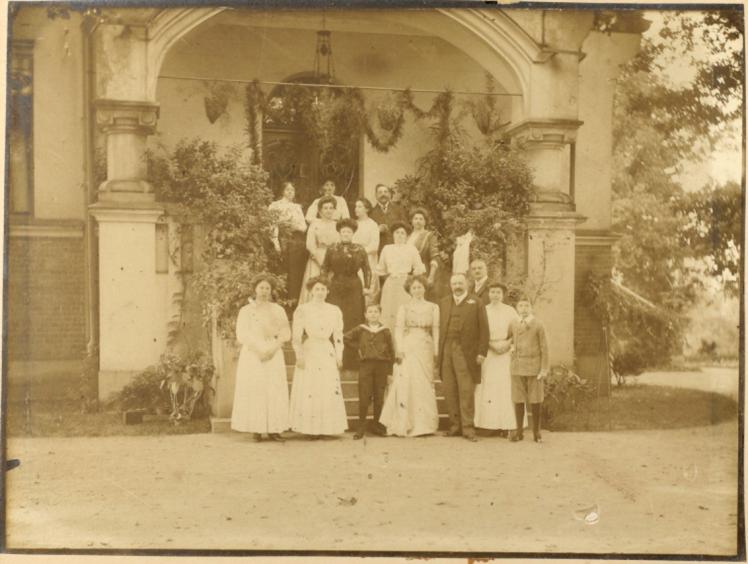
Twelve-year-old Hubert Landau (1st row, 1st on the right) at his parents’ silver wedding anniversary, Sorau, 1908; Jewish Museum Berlin, gift from Judy Deane and Hedy Rudne
The letters that have been preserved do not make it clear that he was gay, but in 2003, the donor compiled a photo album with portraits of family members and supplemented them with brief biographies. Hubert Landau’s read:
“As an artist, a homosexual, and a Jew, Hubert recognized the danger presented by Hitler long before other members of the family did.”
Born in Berlin, he left for the United States in 1935, where he remained into the 1950s:
“He left New York in 1954 after being falsely suspected of a roommate’s murder. He moved to England, spending the remainder of his life with his loving sister Dudie, much to her husband’s dismay.”
Unfortunately, we received no further original documents about his life.
The Doctor and Sexologist Felix Abraham
A year later I inventoried the collection of the Marx and Abraham families, which had been donated to us in 2013. In this case, in the course of sifting through thousands of items, I also unexpectedly stumbled upon a few documents and photographs on the doctor and sexologist Felix Abraham (1901–1937).

Felix Abraham with an unknown woman at the Institute for Sexology, Berlin, approx. 1929–1932; Jewish Museum Berlin, gift from Geoffrey Marx
Beginning in 1929, he was employed at the Berlin Institute for Sexology (Berliner Institut für Sexualwissenschaft). I was particularly stuck by a photo showing Felix Abraham at the Institute with a woman.
Since we know that he carried out sex reassignment surgeries for transsexual people, I assume that the woman is a trans woman and a patient of his. Felix Abraham took his own life while exiled in Italy in 1937, and the collection provides no insight into his own sexual orientation.
Searching for Traces in the Archive
The fact that only these and a few other examples are known to me of LGBTIQ* people in our museum collections does not mean that they were the only ones; some were surely never outed in their lifetimes or afterward, to use a modern phrase. The reason for this—not only in the Nazi era—was criminalization and pathologizing, as well as social ostracization. That means that the documents passed on to us are mostly silent on the subject of sexual orientation and gender identity. Personal self-accounts such as diaries or letters, which might have provided insights into (secret) thoughts and feelings or experiences, are mostly lacking.
As an employee at the archive and a gay man, I like to keep an eye out for identifying queer people, though I know that my “gaydar”
is very subjective and I may be wrong. And I certainly can’t tell how people may have defined themselves. Often, I am looking at documents and photographs from new collections in which the sexual orientation and gender identity of those in question is unclear.
Kurt Friedman und Klaus Oliven
Just a few days ago I had such a case on my desk: I was inventorying a large collection that we had received from Brazil in 2016. It included a beautiful little book from 1938 entitled Alles um Liebe (Goethe) [All for Love (Goethe)].
The book contained poems, quotes, and philosophical thoughts on the title theme, and was lovingly decorated by the then 18-year-old author Kurt Friedmann (1919–unknown/disappeared). He dedicated it to his friend Klaus Oliven (1918–2010). The two knew each other from the Jewish youth movement in Frankfurt am Main and were “chaverim”.
There are “five kinds of relationships between people”
Kurt writes in his first text: “knowing each other, being acquaintances (flirting), being comrades, friendship, and love.”
My curiosity had been piqued, and I paid attention for further hints to the sort of “relationship” between the two.

Poetry collection Alles um Liebe by Kurt Friedmann for Klaus Oliven, Frankfurt am Main, 1938; Jewish Museum Berlin, gift from the Oliven family
Klaus, who describes his romantic relationships with women in his diary, writes about Kurt:
“A handsome boy, very blond […]. A very unusual, strange boy.”
And:
“He was a boy who could have a big effect on girls. There was something very suggestive and interesting about him.”
Undoubtedly, the two young men shared a very special relationship and shared a lot with each other:
“I discussed sexual morality with Kurt. He makes a distinction between love and sexuality. He says every person needs sexual gratification.”
Eighty years later, I am holding the little book in my hands, and Kurt Friedmann still seems interesting to me. I hope to be able to find further biographical information on him and his later life. Perhaps it will remain Kurt’s secret what he felt for Klaus. And maybe it’s better that way.
Jörg Waßmer, Archive, wrote this text in July 2018, when Christopher Street Day took place for the 40th time in Berlin. Like every year, it featured demonstrations for the rights of gay, lesbian, bisexual, and transgender people, this time under the slogan “My body — my identity — my life!”. As ever, its attendees publicly display and celebrate sexual diversity. In the online feature Kurt. Hunting for Clues Jörg Waßmer describes his further research on Kurt Friedmann.
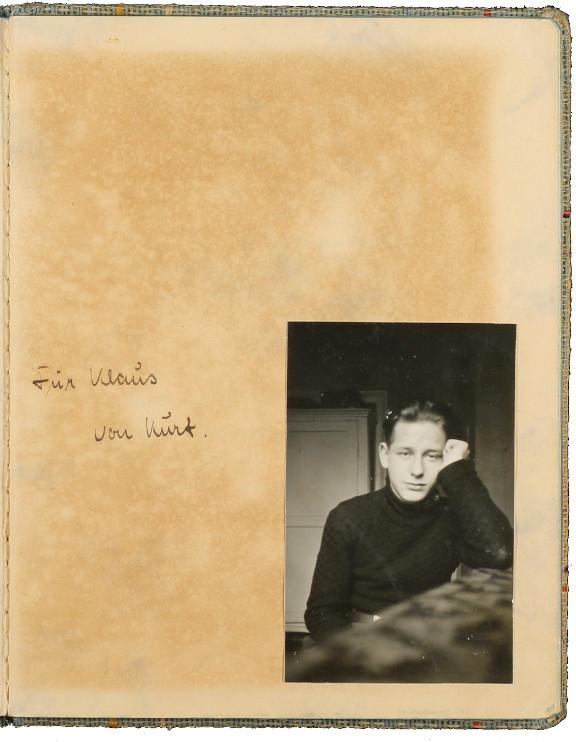
Dedication “To Klaus from Kurt”
of the poetry collection Alles um Liebe by Kurt Friedmann for Klaus Oliven, Frankfurt am Main, 1938; Jewish Museum Berlin, gift from the Oliven family
Citation recommendation:
Jörg Waßmer (2018), All for Love. Sexual Diversity in the Collection of the Jewish Museum Berlin.
URL: www.jmberlin.de/en/node/7603
Behind the Scenes: Anecdotes and Exciting Finds while Working with our Collections (21)



